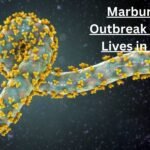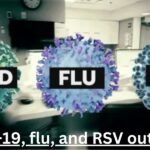Scientific Asia: “The dolphin stood little chance in the encounter against the orca.”
In 2023, a large female killer whale struck a smaller dolphin. The blow sent the dolphin hurtling out of the water in coastal areas near Chile. The unfair struggle ended in a matter of minutes, and the orca started to eat.
The prey was identified as a dusky dolphin (Lagenoryhnchus obscurus), a small coastal species native to South America, by biologists filming the feast from a nearby boat.
The orcas (Orcinus orca) that the scientists had previously observed in the area were pursuing both long-beaked common dolphins (Delphinus capensis) and dusky dolphins.
But this discovery provides the first proof that orcas in the Humboldt Current system—which travels northward in the Pacific Ocean along the western coast of South America—hunt, catch, and exchange dusky dolphins.
Although there is only one species of orca, there are several ecotypes, or groups, that exhibit similar appearances and behaviors, such as preferred prey and hunting techniques. Orcas are found all around the world.
The Northern Hemisphere has five ecotypes, while the Southern Hemisphere has five. Researchers stated on Thursday in the journal Frontiers in Marine Science that although the orcas of the Humboldt Current have not yet been allocated to an ecotype, the observation of their dolphin-hunting behavior offers insights about potential habitats for this group.
The habits of the Humboldt Current orcas are generally little understood; they haven’t been studied as well as other killer whale populations, such as those that inhabit the area around Antarctica and the western coast of North America. They’re also not as well-known online as the infamous orcas that have crashed boats in the Strait of Gibraltar and close to Scotland.
Yet efforts are being made by marine biologists to bridge that information gap. Following surveys and an examination of almost a decade’s worth of information, images, and footage, researchers discovered 28 instances of orca sightings in two places in the Humboldt Current. The researchers are assembling a more complete picture of the location and behaviors of the elusive whales, image by image.
Oceanography – From the History of the Sea to the Latest Discoveries
How Life Science is Evolving in the Modern Age
Sharing is caring
As highly sociable animals, killer whales have a lot to teach us about their behaviors and how different groups may have different routines, according to Sarah Teman, a doctorate candidate at the University of Washington in Seattle’s School of Aquatic and Fishery Sciences.
Teman, who was not involved in the research but has studied interactions between orcas and porpoises, said, “Killer whales around the world can have different diets, different communication styles, even different cultures.”
She stated, “We still don’t fully understand the diversity of killer whale populations.”
Cold, nutrient-rich water cycles upward from the ocean’s depths in the Humboldt Current. It contains nutrients that support krill and schools of anchovies, which are then eaten by larger marine mammals like seals and dolphins, which are the orcas’ food source.
“She’s an assistant professor at the Alexander von Humboldt Institute of Natural Sciences, University of Antofagasta in Chile, and also directs Chile’s Marine Megafauna Research Lab (CETALAB).” She and her colleagues studied media and reports from local fishermen and whale-watching tour boats in the Humboldt Penguin National Reserve and the Mejillones Peninsula in northern Chile. They did this between 2011 and 2023.
Additionally, the scientists used an overhead drone to video orcas and conducted boat studies in Mejillones Bay. The researchers identified at least two separate social groups, each consisting of five to six individuals, based on associations among orcas. These tiny orca groups, called pods, are typically made up of a matriarch and her offspring.
The length of a dusky dolphin is around two meters, and its maximum weight is 187 pounds (85 kilograms). An orca, on the other hand, can grow to a length of 32 feet (10 meters) and a weight of 11 tons (10 metric tons). Two orca sightings were documented in May 2023, according to the scientists’ analysis. The animals were hunting dusky dolphins.
A female orca once chased and threw a dolphin into the air, then swam up to feed the other orcas while holding the dead dolphin in her mouth. The second occurrence involved a female orca holding a dead dusky dolphin while her youngster and other orcas quickly consumed the body, in around fifteen minutes.
Previous research has shown that orcas hunt dolphins in areas close to Argentina, New Zealand, and California.
Furthermore, a pod of primarily salmon-eating orcas has been harassing and killing porpoises in the Salish Sea, an inlet of the Pacific Ocean between Washington State and British Columbia in Canada. The orcas do not consume the porcupines that they have killed, though.
According to the study, the Humboldt Current orcas targeted Humboldt penguins, South American fur seals, and leatherback sea turtles in addition to dolphins. Additionally, the researchers found evidence of orca tooth rake marks on a fin whale’s (Balaenoptera physalus) dorsal fin.
In the waters close to Chilean Patagonia, orcas are known to kill and consume sei whales (Balaenoptera borealis), even though no fin whale hunting observations have been made.
According to García Cegarra’s email, “Sei and fin whales are very similar,” meaning that the orcas in the Humboldt Current most likely hunt fin whales as well.
A Deep Dive into WellHealthOrganic Buffalo Milk Tag
‘A great fortune’
However, compared to recognized Type A orcas, Humboldt Current orcas have a thinner white eye patch. The authors noted that genetic tests on skin samples might resolve this. However, they were not obtained for this investigation.
According to García Cegarra, the International Union for the Conservation of Nature’s Red List, which tracks threatened and endangered species, and Chile’s Ministry of the Environment have both described the Humboldt Current orcas as “data deficient.”
Conservation groups can better protect orcas if they track them and understand what these killer whales are hunting and eating.” Consequently, they are not protected by any management tools or tactics.
Teman stated, “Killer whales are valuable in and of themselves, and they play a critical role in the world’s oceans.” “More knowledge of whales makes us better at protecting their waters.”
Further research will help scientists understand Orcas’ social interactions. They want to know how orcas pass their hunting techniques on to their young. And far less is known about other fascinating behaviors of orcas.
For instance, García Cegarra wrote in the email that an orca calf approached the scientists’ boat during one of the meals, a mouthful of dolphin meat. An orca and a diver had previously been seen in Australia engaging in a similar exchange, but it had never been seen in the Humboldt Current. According to García Cegarra, there is a possibility that the orca was sharing its meal, although scientists are unsure of this for sure.
She did note that there is little chance of recording orca hunts in the wild in this manner. Because orcas often roam in small groups and can swim enormous distances quickly, encounters with them during study excursions are usually rare.
“Being in the water at the same location and moment that orcas choose to go hunting is a fantastic coincidence,” the woman remarked.










